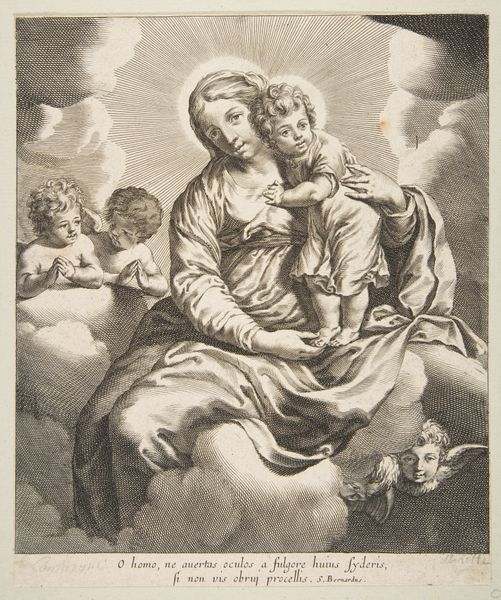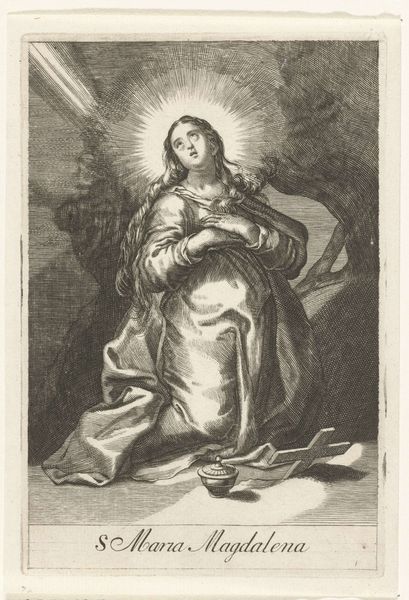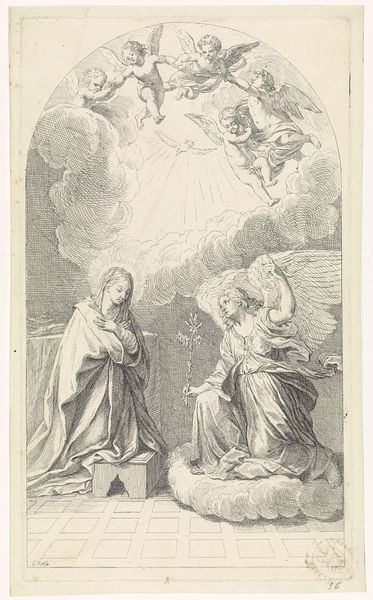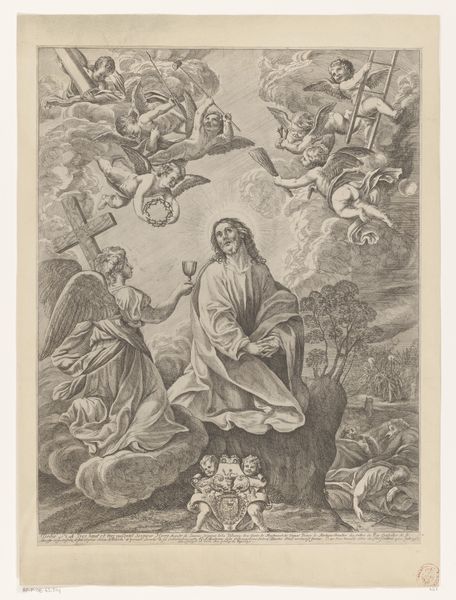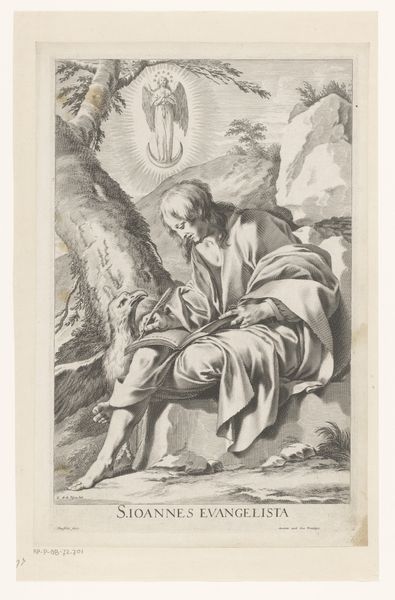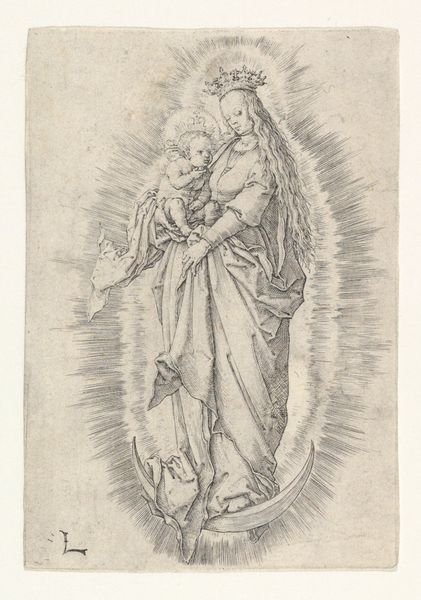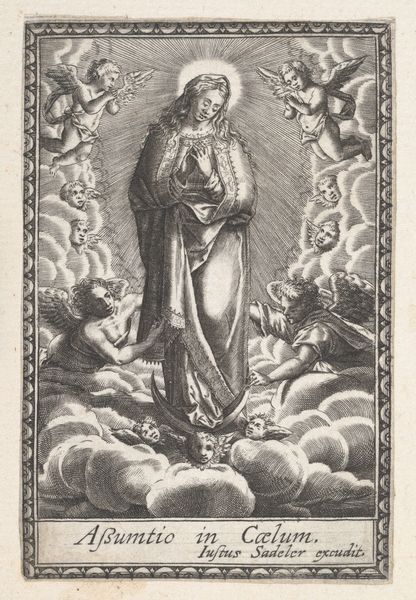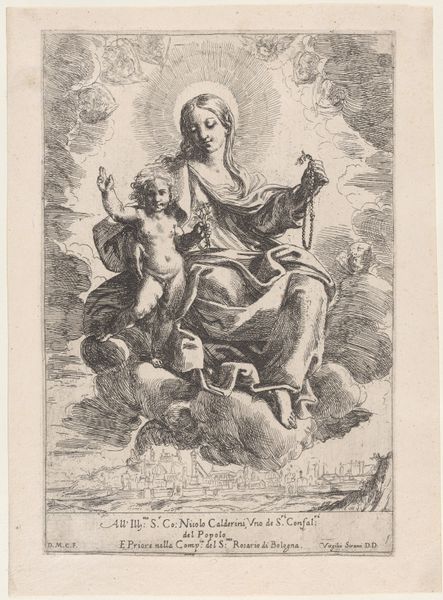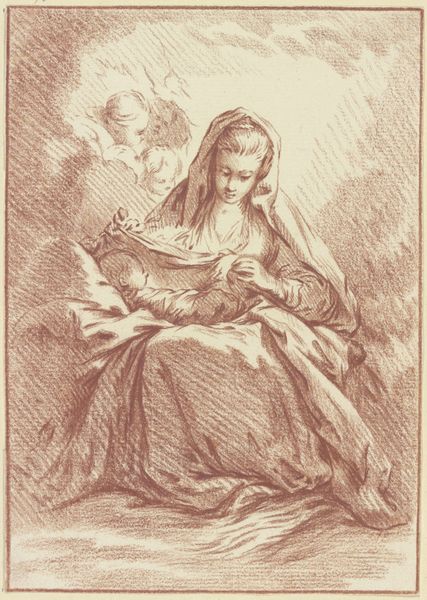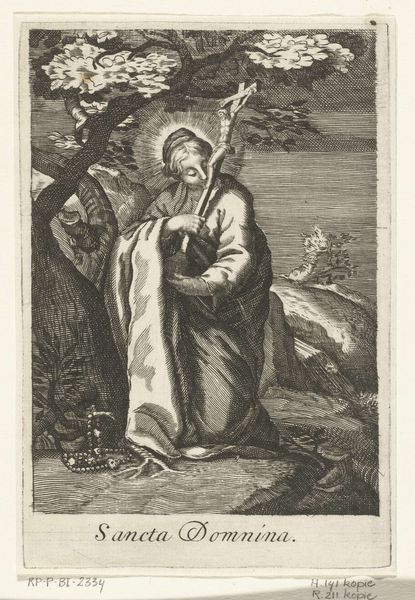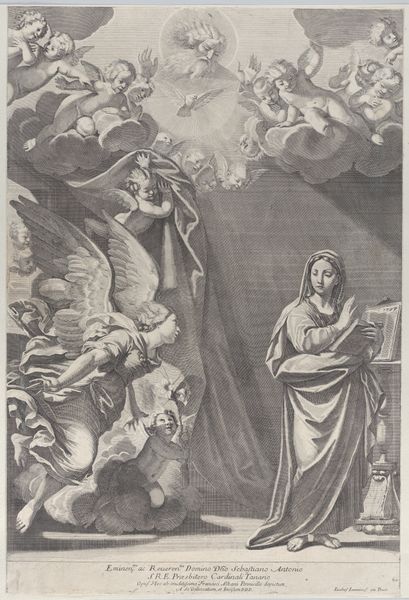
engraving
#
portrait
#
baroque
#
figuration
#
line
#
engraving
Dimensions: height 194 mm, width 144 mm
Copyright: Rijks Museum: Open Domain
Curator: Looking at "Maria met Kind in de wolken," or "Mary with Child in the Clouds," currently held in the Rijksmuseum, there's a distinct quality to this baroque engraving dating sometime between 1592 and 1672. Editor: The sheer density of the linework creates a dramatic, almost claustrophobic atmosphere. The hatching gives the clouds this weighty, textural quality I can almost feel. Curator: Indeed, the engraving technique, a precise system of hatching and cross-hatching, builds form and volume in the absence of color. What's arresting is how that labor yields this devotional imagery, recalling centuries of Christian art. We see cherubic figures surrounding Mary and Jesus, visual cues laden with cultural significance. They create a hierarchy and invoke the heavenly realm. Editor: Absolutely, but consider the economics of reproductive prints during this era. Engravings such as these enabled wider distribution and consumption of religious imagery. Someone skillfully labored over this copper plate for hours on end. That intensive labor translates into this image's accessibility across social classes. Did that alter how the image was consumed? Curator: That accessibility inevitably shifts meaning. The iconography – the Virgin and Child, radiant light symbolizing divinity – would have been deeply familiar. Yet, mass reproduction dilutes the aura of uniqueness and shifts its impact from a miraculous experience to a symbol of faith disseminated across society. The psychological impact is no longer confined to religious spaces. Editor: It democratizes religious imagery. Consider too, the artist: Anonymous. An entire system developed where skillful engravers acted as almost production laborers who disseminated a master painter's ideas for wider audiences. So many lost skilled artists that these kinds of methods effaced. It seems unfair somehow. Curator: It does speak to how artistic contributions are valued, or in some cases, erased over time. Anonymous authorship raises important questions about how these engravings are to be viewed now, the intentions that produced them, and who benefits. But this baroque engraving has also transcended its time and medium and continues to echo across visual culture. Editor: I agree, understanding its context gives depth and complexity to how it carries that meaning. I can't help but think now, of all the countless hours spent producing devotional works like these for a growing economy and changing artistic climate.
Comments
No comments
Be the first to comment and join the conversation on the ultimate creative platform.
